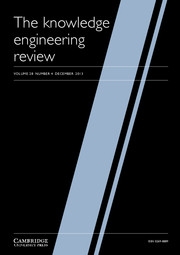No CrossRef data available.
Article contents
Human–agent transfer from observations
Published online by Cambridge University Press: 27 November 2020
Abstract
Learning from human demonstration (LfD), among many speedup techniques for reinforcement learning (RL), has seen many successful applications. We consider one LfD technique called human–agent transfer (HAT), where a model of the human demonstrator’s decision function is induced via supervised learning and used as an initial bias for RL. Some recent work in LfD has investigated learning from observations only, that is, when only the demonstrator’s states (and not its actions) are available to the learner. Since the demonstrator’s actions are treated as labels for HAT, supervised learning becomes untenable in their absence. We adapt the idea of learning an inverse dynamics model from the data acquired by the learner’s interactions with the environment and deploy it to fill in the missing actions of the demonstrator. The resulting version of HAT—called state-only HAT (SoHAT)—is experimentally shown to preserve some advantages of HAT in benchmark domains with both discrete and continuous actions. This paper also establishes principled modifications of an existing baseline algorithm—called A3C—to create its HAT and SoHAT variants that are used in our experiments.
Information
- Type
- Research Article
- Information
- Copyright
- © The Author(s), 2020. Published by Cambridge University Press


